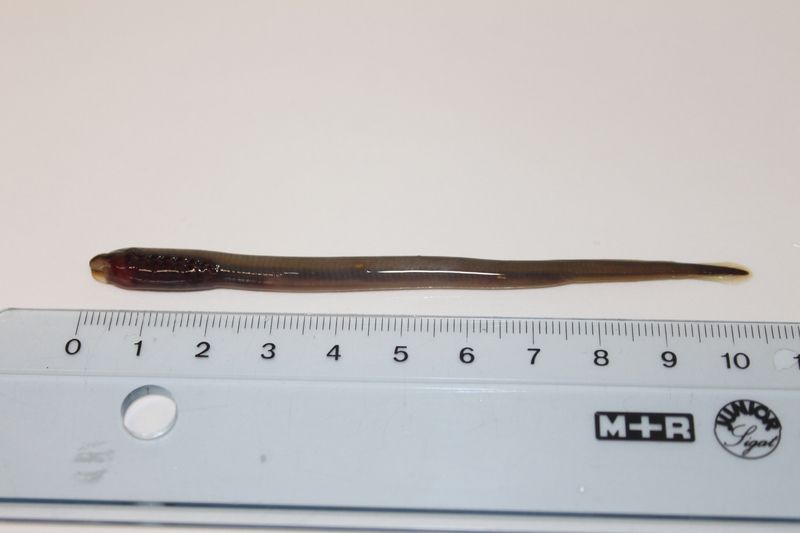Primitive vertebrates with an adaptive immune system
A key organ found in our adaptive immune system is more common than previously assumed: Max Planck researchers demonstrate the presence of thymus-like structures in the primitive lamprey
Primitive vertebrates with an adaptive immune system A key organ found in our adaptive immune system are more common than previously assumed: Max Planck researchers have demonstrated the presence of thymus-like structures in the primitive lamprey. The adaptive immune system is one of evolution’s greatest inventions: our bodies react to pathogens by producing highly specialised defence cells – the T lymphocytes which mature in the thymus – and antibodies that are capable of recognising the intruders, even years after the original exposure. Whether this ingenious defence system and the organs necessary for its functioning are an exclusive feature of higher vertebrates is a question that has preoccupied scientists for 150 years. A research group led by Thomas Boehm from the Max Planck Institute of Immunobiology and Epigenetics in Freiburg working in cooperation with American scientists has succeeded in providing a conclusive answer to this question: the scientists have discovered thymus-like tissue in lampreys, arguably the most primitive living vertebrates. Therefore, they too possess the central structure of specific immune defence.

© MPI of Immunobiology and Epigenetics
The question as to when and how the thymus originated is of interest not only for evolutionary biologists, it is also important from a medical point of view. “An in-depth understanding of the development and functioning of this organ in different organisms could ultimately contribute to a better understanding of immune disorders in humans,” explains Thomas Boehm, who has been studying the immune systems of various organisms for many years. In today’s higher vertebrates, the T lymphocytes or T cells mature into powerful defence cells in the thymus gland, which in humans is located above the heart. As soon as they leave this organ, the T lymphocytes can identify molecules that are foreign to the organism and launch a targeted attack on bacterial or viral pathogens. Specific receptors that bind to the intruders (antigens) and destroy them are situated on the surface of the T cells. Along with the B lymphocytes, which are specialised in the production of matching antibodies and can also identify foreign pathogens, the T cells form an adaptive defence system that has an excellent memory of previous exposure.
Immunologists and evolutionary biologists long believed that this adaptive immune system was exclusive to the higher vertebrates. Until a few years ago it was not thought that primitive vertebrates like the lamprey – a fish-like living fossil which evolved around 500 million years ago – had the capacity to form antibodies. However, in 2004, American scientists succeeded in demonstrating that the lamprey’s reaction to invasion by pathogens was not limited to a non-specific immune response. They found that the lamprey’s lymphocytes form antigen receptors, proteins that display similar variability to the antibodies of the higher vertebrates. Moreover, these variable lymphocyte receptors also appear to arise in two forms: the lamprey’s T-like lymphocytes form type A receptors on their surface and their B-like cells produce type B receptors.
“The discovery of the T-cell-like lymphocytes re-ignited the old question as to whether primitive vertebrates like the lamprey may even have thymus-like tissue.” Despite extensive efforts, scientists had previously failed to demonstrate this. Boehm and his team used the very latest genetic methods to carry out a new search for this tissue. They found what they were looking for. They discovered thymus-like structures in the gill area of the lamprey that they have termed thymoids: this was the only location where the genes involved in the production of the variable lymphocyte receptors were active. “We now assume that the lamprey has a dual immune defence system similar to that of humans,” says Boehm. While the lamprey’s “T-cells” mature in the thymoid, the “B cells” appear to develop in a structure equivalent to bone marrow.
The discovery of this thymus-like tissue in the lamprey represents an important advance in this field of research. “It may enable us to fully understand the structure and design of adaptive immune systems for the first time,” explains Boehm. The lamprey clearly developed a different but similarly effective immune defence system at the same time as the higher vertebrates about 500 million years ago. Therefore, the features that are common to the two systems should constitute the indispensable basic principles of the immune system. “However, from sharks to humans, the immune system displays a similar degree of complexity,” explains Boehm; “at the moment we are unable to see the wood for the trees.” Thus, the scientists also hope to gain new insights into malfunctions of the immune response which arise, for example, in the case of autoimmune diseases. The next step, however, involves gaining a better understanding of the genetic mechanisms at work in the immune defence system of the primitive lamprey.
Original publication
Baubak Bajoghli, Peng Guo, Narges Aghaallaei, Masayuki Hirano, Christine Strohmeier, Nathanael McCurley, Dale E. Bockman, Michael Schorpp, Max D. Cooper, and Thomas Boehm; "Identification of a thymus candidate in lampreys Nature", 3. Februar 2011






















































